When the Circus First Came to Town
In 2018 Britain is celebrating the 250th anniversary of the creation of the circus.
The Beginning:
In 1768, on a patch of land between Westminster Bridge and Blackfriars Road, entrepreneur and equestrian Philip Astley marked out a ring with rope and stakes and filled it with extraordinary performances. The circus was born. The word Circus has its origin in Latin. Historically it was a large enclosure or building surrounded with seats for public spectacles such as chariot racing and gladiatorial contests. While Roman circuses included horse riding and the display and massacre of wild beasts, the entertainment we know as a Circus began with Astley.
Philip Astley, The Man Behind the First Circus:

Philip Astley was an ex-cavalryman seeking his fortune after leaving the army with nothing but his riding skill and Gibraltar, a white horse presented to him upon his discharge. Initially he gave riding lessons in the morning and raised a bit more more money by giving trick riding performances in the afternoon. This proved successful and over time Astley enlarged and developed his riding school. Eventually he built a performance space that he called Astely’s Amphitheatre Riding House.
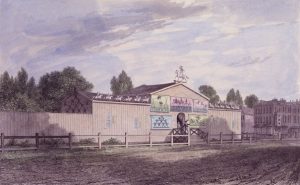
Both Astley and his wife were famous for daring feats of trick riding and the performances of Billy the Little Military Learned Horse. They later added such crowd pleasing acts as balancing, sword tricks, tumbling, rope vaulting, clowns, dancing dogs and comic musical numbers. Philip Astley is credited with the first use of the circular 42 foot performance ring that is still used today. As an experienced rider and inventor of ever more daring equestrian marvels, Astley discovered that riding a horse at full speed in a circle of this diameter applied the most centrifugal force to help keep the rider balanced on the horse’s back. At one time Astley’s had nineteen circuses in England and France and they inspired many imitators.
Where Does the Circus Come In?
It was actually Astley’s one-time employee, imitator and bitter rival, Charles Hughes, who first used the term ‘circus’. In 1782, fourteen years after Astley first set up his ring, Hughes and his partners created the Royal Circus, seeking to copy and outdo Astley’s which was still a popular attraction.
Early European circuses relied heavily on feats of horse riding. As they branched out into other forms of entertainment, traditional theatres resented the competition and there were often lawsuits. In an amusing incident, when Astley opened in Paris he was only able to obtain a licence for riding acts. Being a clever and resourceful businessman, however, Astley designed a platform to be carried by eight horses. This provided a mobile stage for his acrobats and clowns to continue performing “on horseback”.
Most major European cities supported at least one circus, based in a purpose-built building and generally owned by a family of performers. In North America, there were few cities at this time big enough to support such a permanent performance venue.
The North American Circus:
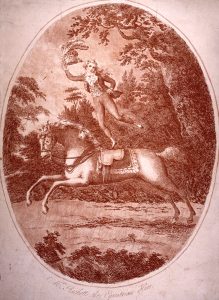
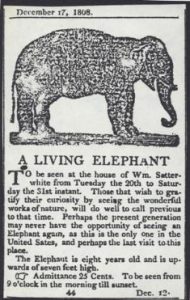
One businessman, Hachaliah Bailey, purchased a young elephant in 1808 which he exhibited around the country. Old Bet was only the second live elephant ever seen in America and was a profitable attraction. Over time Bailey added clowns, jugglers and other animals such as trained dogs, a horse and even pigs to his menagerie. Several generations of Baileys continued the tradition. The Bailey name lives on in the Ringling Brothers Barnum and Bailey circus.
Taking it On The Road:
To reach an audience, performers in North America usually had to travel. There were few cities with a large enough population to support a Circus on a permanent basis. Joshuah Purdy Brown was the first to use a large canvas tent for the circus performance. By 1830 the huge ‘big top’ travelling tent was in general use.
The building of railways in North America was of great benefit to the circus. The ease of long distance travel by rail meant that companies could seek a wider audience with larger and more elaborate shows. In later years PT Barnum moved his whole establishment, including 1,000 staff, 30 elephants and a big top, by train as did the Ringling Brothers and other large companies of the time.
The travelling circus tradition was brought back to Europe along with the American format of multi-ringed shows. The Barnum & Bailey Greatest Show On Earth toured Europe from 1897 to 1902.
The Circus Sideshow:
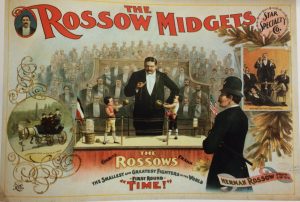
In 1871 Phineas Taylor Barnum, a museum promoter, formed the P.T. Barnum’s Museum, Menagerie & Circus. His ‘museum’, a collection of animal and human oddities was the model for later circus sideshows (or freak shows). Such exhibitions remained a feature of American circuses for decades. The sideshow commonly displayed unusually formed humans such as the bearded lady, armless man or conjoined twins as well as exotic foreigners. Other attractions were often fraudulent, ‘wild boys’ mermaids and the like. This type of freak show fell out of favour in Europe much earlier than in North America, possibly because of the change in how disability was seen after the Great War.
The Theatre of Nouveau Cirque:
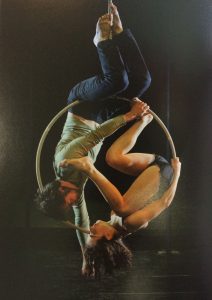
After the 1950s there was a general fading of the traditional circus in favour of television and the movies. Traditional circuses were still around and enjoyed a slightly nostalgic popularity but they no longer had the excitement of earlier eras.
In recent years circuses lost some of their most popular animal acts when welfare concerns led many countries to ban them.
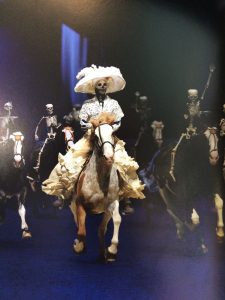
While the traditional circus is by no means dead, a new form, often called “Contemporary Circus or “Nouveau Cirque”arose in the 1970s. Formed independently in several places including California, the UK, France and Australia, this new genre has rejuvenated the circus. Featuring daring new takes on traditional acts like acrobatics and juggling, Cirque uses exciting music, lighting, theatrical techniques and costumes. The whole performance is a seamless, high energy show centered around a single theme or story.
The world’s biggest Cirque Nouveau company is the internationally famous Cirque du Soleil. Founded in 1986 in Montreal, Canada, it is now the largest theatrical producer in the world with over 4,000 employees.
Other contemporary companies prefer to remain small, focusing on innovation rather than size. In a return to it’s equestrian roots, one company, Zingaro, have created an ‘Equestrian Theatre’ designed around the performances of 40 horses.
Whether traditional or contemporary, two hundred and fifty years on, audiences still thrill to the spectacle and excitement of the circus!
We’ve created a Pinterest board to complement this blog.
For more information on circuses in the UK the National Fairground and Circus Archive is a fantastic resource.
[Library assistant, Information & Reference Library]
